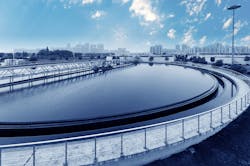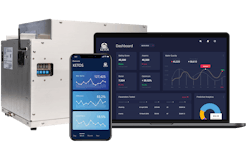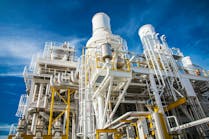Wastewater compliance varies widely from country to country and even within states, provinces and regions. However, wastewater is a sizable issue no matter where you are.
In terms of global wastewater statistics, there are an estimated 360 billion cubic meters annually — and approximately 48% is released directly into the environment completely untreated. One way to lower global wastewater generation is to reuse the water itself. However, only 11% of the globally produced wastewater gets reused. In the developing world, the main issue is the lack of financial resources available to build the necessary resources to collect and treat wastewater.
Water quality and management play a significant role in both developed and developing countries. Many countries establish their standards to protect their citizens and respond to local water quality challenges. However, the World Health Organization (WHO) has also attempted to develop guidelines. But WHO wastewater standards surrounding drinking water and the safe use of wastewater in agriculture and aquaculture develop in isolation.
Closer to home, the United States Environmental Protection Agency (EPA) has worked to develop effluent guidelines. The EPA is also, in tandem, running studies related to landfills, electrical and electronic components, and nutrient removal and secondary technologies to continue to develop a more holistic understanding of wastewater challenges across the country. To that end, the EPA has developed effluent guidelines — national wastewater discharge standards. These guidelines are outlined according to individual industries and are technology-based regulations designed to help mitigate the most significant pollutants in an economically viable way. Direct dischargers have their standards incorporated into the National Pollutant Discharge Elimination System (NPDES) with permits issued by regional EPA offices and the states themselves.
Types of industrial wastewater
There are various wastewater categories. The main differentiators of wastewater are wastewater that contains sewage and wastewater that does not. However, these two main categories can be broken down further. Types of domestic wastewater, for example, include water from toilets and greywater (water from kitchens, bathrooms, washing machines and other household appliances). It may, depending on the region, also include some industrial wastewater.
Types of industrial wastewater vary widely as well. Industrial wastewater, generally, is defined as wastewater from industrial or commercial sources. This type of wastewater could affect the quality of receiving waters (such as rivers, lakes and streams) or utilities (publicly owned treatment works). The NPDES permitting program helps establish limits in terms of discharge related to industrial wastewater and the water condition requirements according to the type of facility or activity for industrial wastewater. There are specific NPDES requirements for:
- Mining
- Oil and gas
- Pesticide applications
- Animal feeding operations
- Fishing vessels
Beyond the NPDES requirements, however, industries are aware of what types of pollutants make up a more significant proportion of their wastewater and must find ways to remediate water to be able to return it, at acceptable levels, either to local public utilities (for further treatment), for reuse and recycling within their operations, or into the environment. Specific industries create certain types of wastewater, for example:
Chemical manufacturers
- Acids/bases
- Spent solvents
- Wastewater containing organic constituents
Oil and gas
- Hydrocarbons
- Benzene
- Sludge from the refining process
Metal manufacturing
- Heavy metals
- Cyanide
- Paint waste
Wastewater guidelines
The EPA effluent guidelines cover multiple areas of wastewater. They also have a toxic pollutant list (developed in 1976 and added to the 1977 Clean Water Act). The list is intended as a starting point for states to ensure effluent guideline regulations, NPDES permit requirements and water quality standards nationwide. While toxic and priority pollutant lists are somewhat outdated — for example, they have yet to take into consideration PFAS or “forever chemicals” and may contain pesticides no longer used in the United States — consulting the lists happens when various parties develop ambient water quality criteria under the Clean Water Act (sections 303(c)(2)(B) and 304(a).
Globally, there are no clear and set wastewater guidelines that all countries agree to adhere to. However, both domestically and internationally, water management systems are facing the large-scale issue of accelerating water insecurity.
That is not to say that nothing is changing. The UN, for example, has found that for every U.S. dollar spent on sanitation, the knock-on benefits to society amount to $5.50 USD. While feasible and financially viable treatment of wastewater continues to challenge the global south, more international organizations are stepping in to pledge net-zero water usage in their industrial environments around the globe. As a result, many are adjusting their internal industrial wastewater discharge standards — where external regulations may not exist — to prioritize water reuse and recycling programs to help place less stress on local water supplies and reduce the total amount of created wastewater.
Wastewater treatment plants and more effective wastewater treatments
While the private sector is working to reduce wastewater creation, public utilities are also doing their part to become more effective. While new water treatment plants can redesign their capabilities to even more stringent standards, older facilities are still working on playing catch up in terms of modernizing their services.
The EPA and Clean Water Act dictates water quality standards, no matter the facility. Wastewater facilities have to operate according to specified permits from NPDES. An expected standard, for example, is the baseline for the biochemical oxygen demand (BOD). While wastewater effluent typically has a BOD of 200mg/L, the treated effluent needs to have less than 30mg/L. A wastewater facility that does not meet these standards is at risk of penalty.
Therefore, wastewater must go through a thorough cleaning process. Wastewater is cleaned in multiple steps using a channel technique that makes water flow into channels from one central point. The design of a wastewater treatment plant ensures water increases in quality and cleanliness over multiple steps.
Wastewater operator certification requirements
Another challenge for wastewater compliance is ensuring that personnel are certified and properly trained. While training can vary widely, there are critical components of operator certification, including:
- Classification of operators/facilities/systems
- Qualifications for each grade or level
- Regular training to maintain certification
While training across the country addresses the EPA’s critical elements for operator certification, the training and language are far from standardized.
Wastewater compliance systems and data: Introducing real-time water compliance
As technology continues to build in importance across the water industry, organizations and local utilities are looking for solutions that help automate and digitize their processes to allow them to stay EPA compliant. While the EPA continues to demand third-party lab testing, there is a need for more constant and consistent testing that third-party labs cannot provide simply due to the manual process of collecting and testing.
Technology solutions offer on-site hardware and/or cloud-enabled software to test wastewater at regular intervals and consistently deliver EPA-compliant sampling. Data can be provided straight from a physical device to the cloud so that water operators can follow real-time water quality data directly on their mobile devices. This can alert them to changes in pH or chlorine levels, or sudden spikes in nitrates or ammonia in their water treatment plant, for example, and can help them reassess at each step of the water treatment process without having to wait on third-party data.
While we may be under the impression that the U.S. has infinite funding to handle wastewater management, that is not the case. Advanced treatment facilities can be prohibitively expensive. However, technology, when leveraged, can be a powerful ally in wastewater remediation.
Meena Sankaran is the Founder & CEO of KETOS, a water intelligence startup that delivers actionable metrics and predictions on water safety and overall availability. Founded in 2015, Meena launched KETOS to help make water safer and sustainable today and for future generations. www.ketos.co




